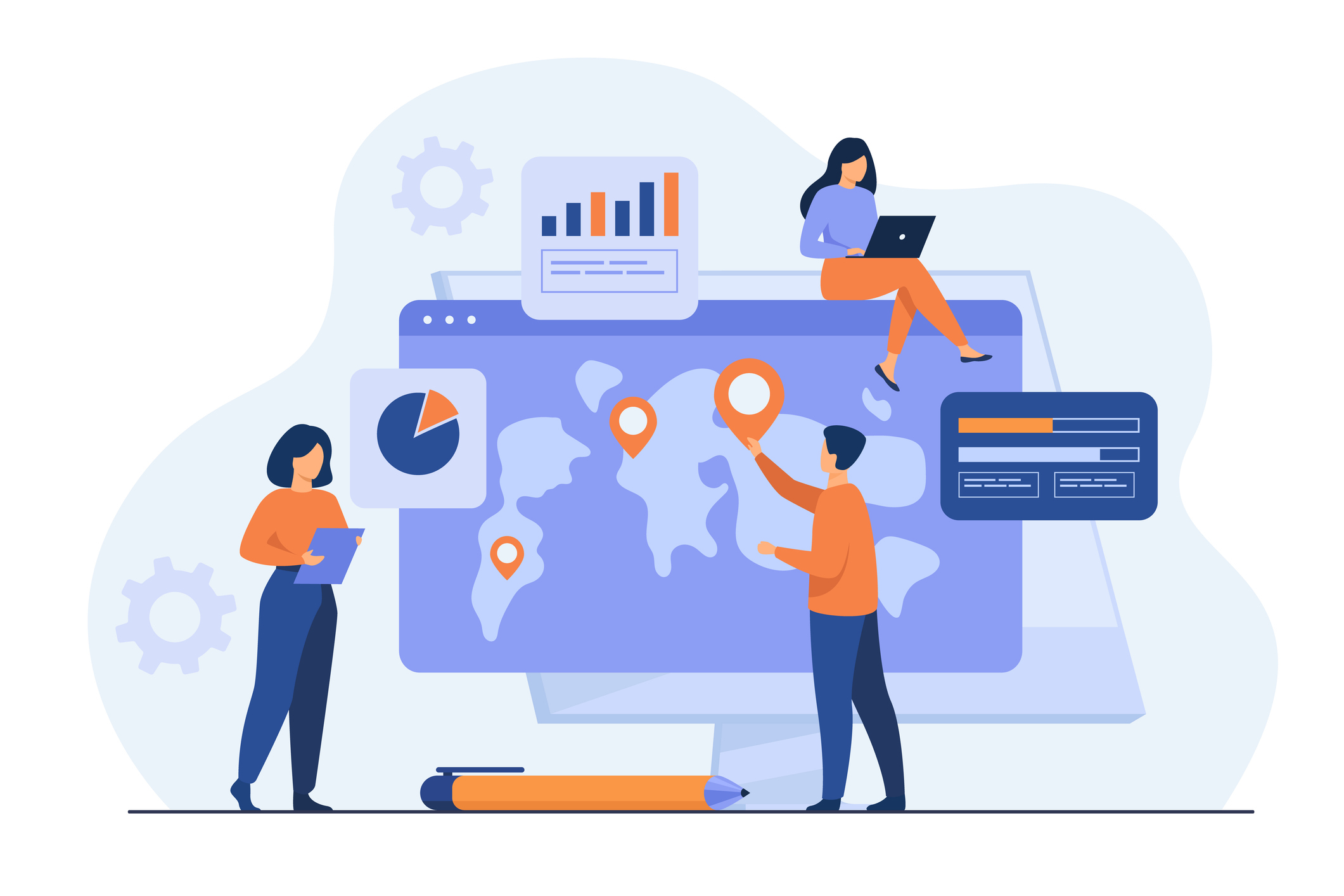By Tracey Hyatt Bosman, CEcD, & Carissa Foley, Biggins Lacy Shapiro & Co.
An adaptation of this commentary will be published in the January 2025 issue of Site Selection magazine with additional insights and a Q&A with the authors. Got a story about AI helping, hindering or otherwise influencing your location decision-making process for a company investment? Write to Site Selection Editor in Chief Adam Bruns at adam.bruns@conway.com.
Tech disruption has become commonplace in every facet of life and commerce. Everyone is bombarded daily by new announcements of amazing new capabilities in generative artificial intelligence (AI), cybersecurity and predictive analytics. Yet how many of us are convinced that we can ask ChatGPT to choose the optimal location for our next manufacturing plant or distribution center? For now, the answer is a resounding “not many, if any.”
Don’t we still want (and need) human experience to ensure that intangibles and key insights into market conditions and trends are not lost during location evaluation and site selection? The answer from these two humans is yes.
“One might be tempted to wonder whether AI knows something the human site selector doesn’t. But the inconsistencies in the AI responses disabuse us of that notion.”
Like most industries, site selection has benefited from advances in technology (many spurred by the pandemic), particularly from remote collaboration tools like video conferencing and project management platforms. We can now do more with less travel, facilitating scheduling and allowing broader participation by client team members. Drones are increasingly giving us better access to visual inspections of sites, before and during fieldwork. We’re even beginning to see virtual reality (VR) and augmented reality (AR) tools utilized for introductory virtual visits, though this is still far from the norm.
But every jaw-dropping headline increases the marketplace’s expectations that technology can answer strategic questions with the push of a button, which leads back to the question of whether AI is able — or soon will be able — to provide site selection decisions with a push of that technological button.
Those of us in the industry recognize that this question itself reveals a fundamental misunderstanding of the site selection process: Namely, it’s about much more than “just data.”
AI Isn’t Ready Yet
In a recent survey on the topic, the Site Selectors Guild (SSG) concluded the anticipated benefits of AI are numerous, “including greater efficiencies through the automation of tasks, enhanced decision-making, and motivating an innovation mindset.” However, the report also warns of the potential pitfalls from sole reliance on AI, especially in the world of site selection, where a poor choice has dire consequences and relying blindly on online information is dangerous.
In the SSG study, which was managed by Development Counsellors International (DCI) and conducted by a doctored professor of computer science at the University of Puget Sound, two basic site selection inquiries were tested on three AI platforms using “best practices” in the querying process. The first scenario was relocation of software company headquarters and the second was a manufacturing operation looking for a new facility to increase capacity. The three platforms tested were Google Bard, ChatGPT 3.5 and ChatGPT 4.0.
The result? There were commonalities among the shortlisted locations recommended by the platforms (with each other and with the human-generated lists) but there were also deviations, with recommendations varying according to which AI platform was used.
Unlike human site selectors, AI cannot yet pick up the phone, have a conversation and make a judgment call.
One might be tempted to wonder whether AI knows something the human site selector doesn’t. But the inconsistencies in the AI responses disabuse us of that notion, as asking the same platform the same question multiple times yielded multiple and different versions of the short list.
Why Human Expertise Still Matters
Site selectors are as eager as the next industry to use AI to achieve greater efficiencies, but there are four reasons we do not worry about AI leading to our unemployment anytime soon:
- Data Limitations: As past trends continue and evolve, more and more of the data metrics we use will be turned over to computers. That will be a welcome assist, but there will be limitations for the foreseeable future:
- Location variables are often too customized and nuanced, and a detailed, online record of past and recent location decision-making is sparse at best. Artificial intelligence simply does not have access to the needed information, as it doesn’t exist in conventional databases. Nor has AI yet been trained to understand which tax rate or utility rate or industry classification to choose based on project parameters. Finally, unlike human site selectors, AI cannot yet pick up the phone, have a conversation and make a judgment call.
- All data has limitations; professional site selectors study these limitations and, by applying our experience, know how to avoid being misled. For example, Census and Bureau of Labor Statistics data are sometimes not shared for a given market due to disclosure limitations. Further, building apples-to-apples comparisons of data across geographies of varying sizes and market dynamics is both a science and an art, honed by location decision-makers and site selection consultants over years of experience. Until and unless AI tools are sufficiently trained, they will lack the judgment necessary to reliably interpret data. Further concerns exist over artificial intelligence’s susceptibility to efforts to bias and/or manipulate online information in ways which could influence results.

For the time being, fieldwork assessments, collaboration, negotiation and consensus building are among the site selection processes best left to human beings.
Photo: Getty Images
- Fieldwork Assessments: Computers are not good at the subjective assessments and interactive dialogues that comprise fieldwork. They cannot assess the business friendliness of a community. They do not have the ability to work with local zoning authorities and neighborhood groups to overcome potentially fatal project roadblocks. They are currently unable to predict whether relocating staff will enjoy a warm welcome in their new destination.
- Recognizing Opportunities to Change the Facts: AI cannot yet assess and predict the possibility of changing the facts about a location. It cannot, for example, recognize the potential to negotiate a new rate class for a large power user, or the likelihood that a permit could be expedited. As those of us in the industry know, no site is perfect from the outset. Perfection requires vision, as well as collaboration and negotiation with local leadership. Professional site selectors are experienced in managing these considerations, and we have the industry contacts and economic development relationships to explore and quickly determine what’s possible.
- Consensus Building: Even the most rudimentary location algorithms are capable of scoring and ranking a set of competing destination choices. However, they are presently unable to facilitate consensus within the company’s management team without the intervention of a human site selector or similar advisor. The perspective of the CEO will inevitably be different than that of the HR officer, the CIO, head of operations or the CFO, yet each perspective needs to be considered, and the internal political context must be acknowledged before a sound location decision can be made.
Site selection is about much more than data-driven outputs. It’s about multifaceted, strategic decisions that will impact a company’s future performance for many years. As long as humans are running companies, companies will be best served by human site selection experts — until the day comes when AI takes over the corporate boardroom.

As managing director, Tracey Hyatt Bosman, CECD, develops and executes incentives and location selection strategies for Biggins Lacy Shapiro & Company’s corporate and institutional clients. She is a certified economic developer with twenty years of professional experience across a wide range of sectors, including data centers, manufacturing, headquarters, back office and contact center operations, and logistics.

Carissa Foley is a GIS and site selection consultant at Biggins Lacy Shapiro & Company, providing advanced GIS-based analytics, mapping and customized research in support of site selection consulting projects to clients across the country.
